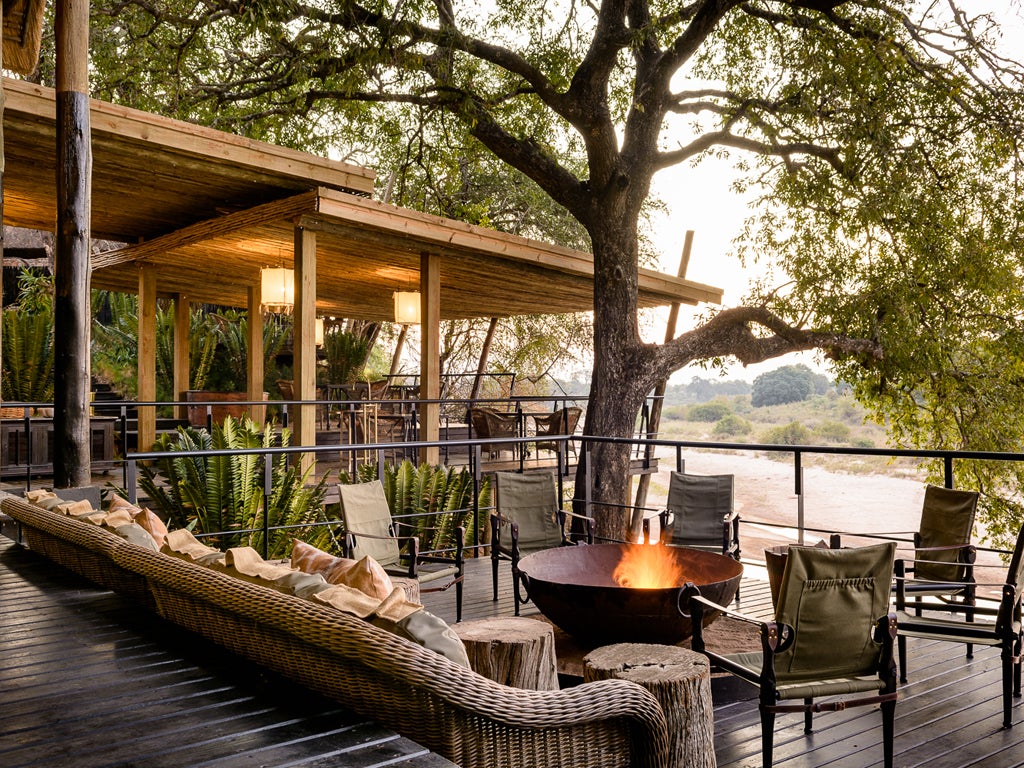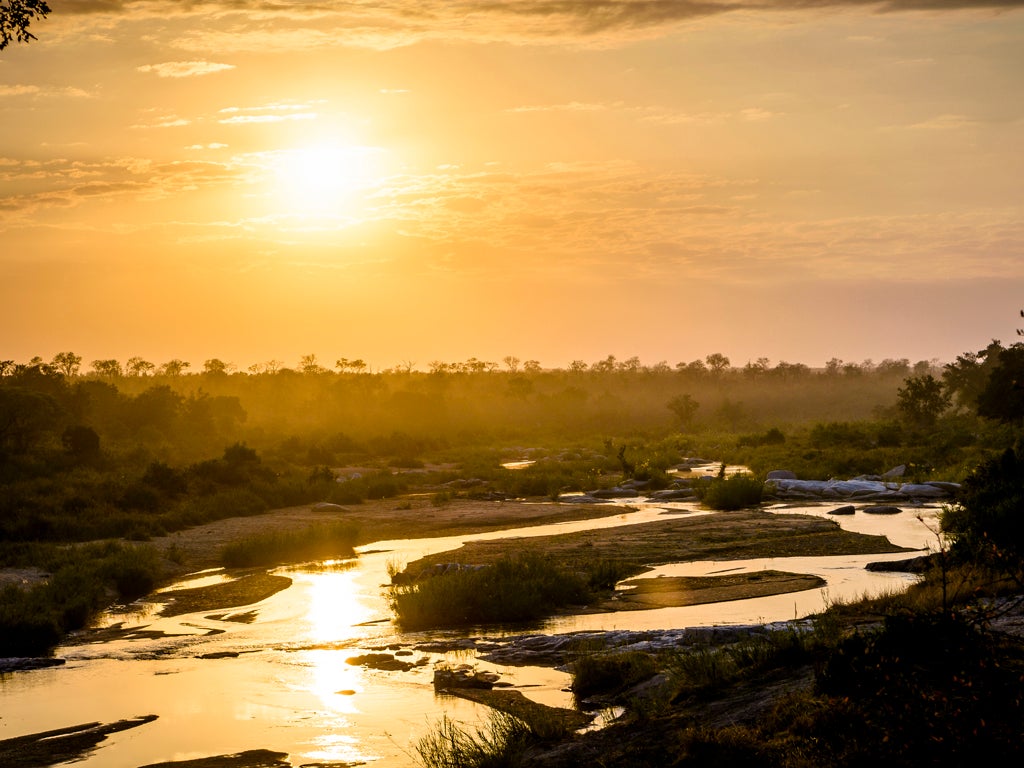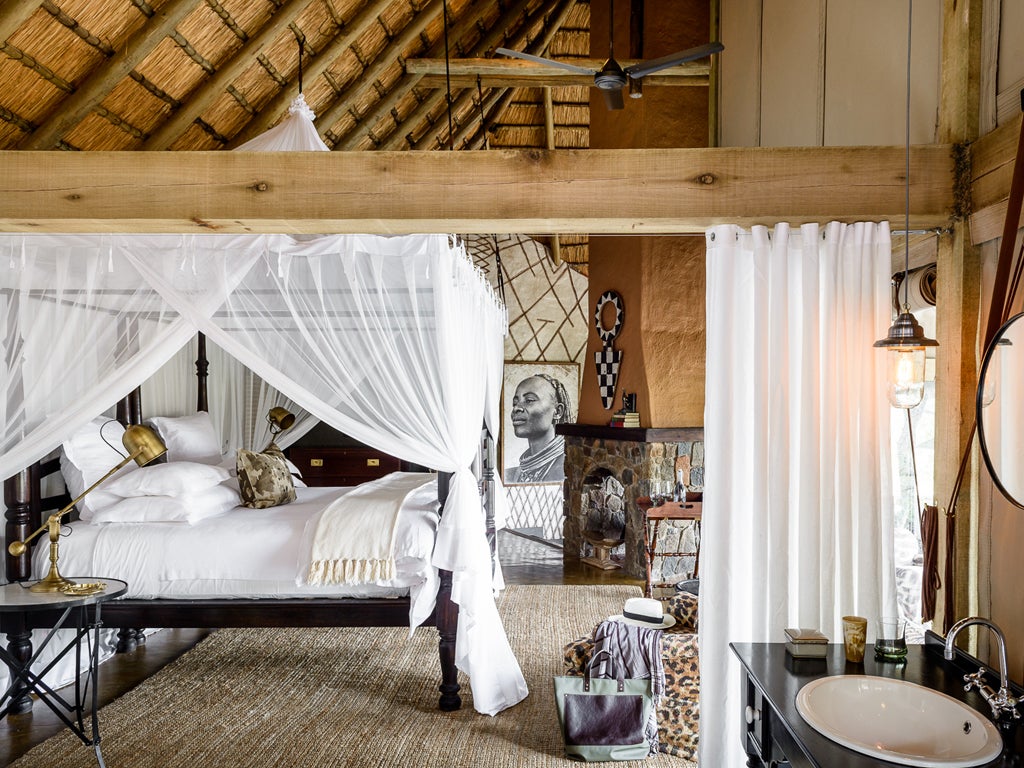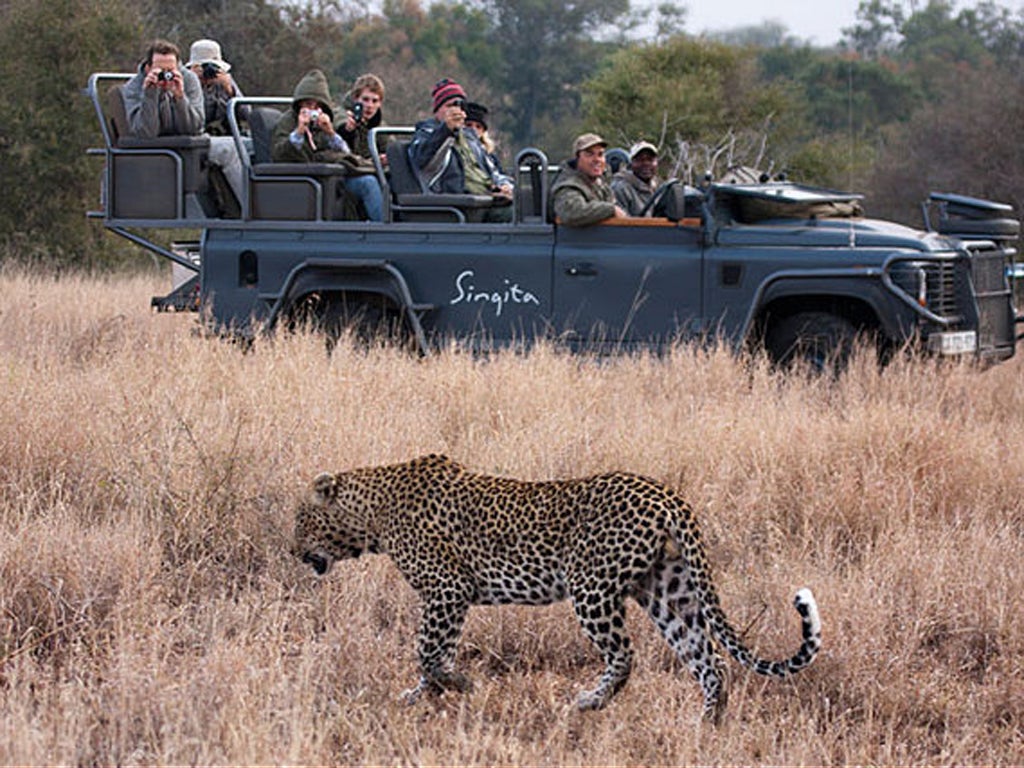The Independent's journalism is supported by our readers. When you purchase through links on our site, we may earn commission.
How a pioneering South African safari lodge is aiding the nation's conservation effort
Singita's guests pay a premium not only for the luxurious ambience but to ensure the local wildlife is protected and community supported

My first experience of safari, in the mid-90s, was anything but luxurious. It came about via a last minute booking via Teletext. On the three game drives out of the depressing, ring-fenced compound-with-swim-up-pool-bar in Kenya that I was staying at (perpetually surrounded by prostitutes and individuals aggressively hawking anything and everything), I saw very little apart from an awful lot of gift shops. Our vehicle was a clapped-out, closed-in, airless van that repeatedly broke down. I may have been the sole traveller on that trip who made it back to Mombasa airport without a wooden giraffe, or a tale of being held up at gunpoint.
The budget safari is a dismal idea on just about every level. Experiential qualities aside, if a company is flying in A380s full of package holidaymakers determined to see the Big Five, conservation concerns will go the same way of quality control. Similarly, shepherding tourists, on a budget, at speed, in and out of a resort surrounded by poverty and a dearth of infrastructure (power, water and so on) should make everyone involved feel uncomfortable.

The concept that we now recognise as the “luxury safari” took hold in the 1970s, a natural descendant of repellant big game hunting drives. It was a journey into the wilds of Africa for the lucky few, in sumptuous comfort. Today, Singita is the Chanel of luxury safari brands. The first of its 12 lodges, Ebony, opened in the Sabi Sand Reserve in 1993, and was recently refurbished with outlandish levels of sophistication. There are just 12 suites, and the price of a stay is north of £1,000 a night per person. But when I visited recently, I wondered how wide the profit margin could be – it’s a lavish all-inclusive product, and the amount invested in off-property community and conservation projects is extraordinary.
I was impressed by much more than just the wildlife at Ebony: at a time when websites freely advertise hunting safaris with the slaughter of male white lions pegged at $30,000, white rhinos POA and jackals free of charge, what Singita is doing in terms of its anti-poaching patrols (armed with thermal imaging, Weimaraners, German Shepherds and firearms) is to be applauded. “Until about four years ago, poaching wasn’t a major issue,” says Mark Broodyk, Singita’s Head Guide. “But in 2014, one rhino was killed every eight hours in South Africa. They were nearly extinct in the 1970s, and conservation efforts turned it around. Now there are less than 20,000.”
Singita is engaging wealthy visitors with this part of South Africa in a beneficial way far beyond buying trinkets from a gift shop. “Our guests have always wanted to support the local villages,” says Mandla Mathonsi, Community Development Officer, “but what they were buying from them was rubbish. We worked with the village; they are now being trained to make jewellery and administer their businesses seriously. They create glass beads recycled from bottles from the camp.”

Likewise, Singita invests heavily in local farming initiatives, and development of schools. It also invites local children on tours at weekends. After an American couple spent several days at the Lodge last year, they became so close to their butler that they paid for a well to be constructed next to his house. But nothing is presented as a “charity case” at the Lodge – it’s incidental to trip-of-a-lifetime experience. It’s difficult to balance the needs of a community that gets the entirety of its water delivered just twice a week, with honeymooners in four-poster beds. But it works. And both sides are the happier for it.
Going on safari somewhere like Ebony Lodge, both on the two-game drives per day, and back at your suite (wallowing in your private pool, surrounded Tippi Hedren-style by curious vervet monkeys), is about privileged pleasure, in terms of both the expenditure necessary and the access to wildlife. When I first arrived at Ebony, after a white-knuckle hour of being bounced around in hot air turbulence on a prop plane from Johannesburg, I sat down for lunch on one of the pavilion decks and watched a hundred or so elephant parade through the landscape, just across the river. “Some guests think we have them caged up and let them out when they arrive, for dramatic effect,” explained my waiter. Midway through my burger, a group of zebras appeared, then a rhino. All the while, kudu grazed a few feet below me on a steep incline, occasionally darting a look up, with Adam Ant flashes of white across their eyes below huge, beautiful curled horns.
I don’t think I’ve smiled as much, so consistently, as I did during my stay at Ebony Lodge. Every three to four hour excursion in the custom-spec Land Rover Defender, alternately speeding and stalking a path through the acacia trees with their vicious thorns, formed part of a narrative in a world that puts city life into perspective. The beauty isn’t just moving, it’s overwhelming, from the operatic yawn of a hippo, to a baby hyena poking its head out of its cave and a week-old elephant repeatedly trying to find its feet.
We travelled with the same guides, Emmanuel and Stacy, twice daily – on dawn and late afternoon drives. Stacy drove and Emmanuel took the tracker’s seat, cantilevered ahead of the bonnet. A few minutes into our first drive, Stacy stopped the vehicle and Emmanuel jumped down to take a seat next to her. This would be recurrent protocol in the presence of big cats: he’d spotted a predator’s tracks. A few seconds away we came across two leopards, both taking rapid shallow breaths on the ground, having recently feasted on the impala now dangling from the upper branches of the tree behind.

The drives were remarkable for our proximity to animals. The cats in this part of Sabi Sand pay no attention to the game drives. Singita treads lightly, but it has undeniably changed things. “Fifty years ago, the lions would have run away at a distance,” says Stacy. “Generations of big cats now know not to fear the vehicles, and just ignore them.” Similarly, water holes in the vicinity of the camp are topped up via discreet pipes when necessary, to stop animals moving on during particularly dry spells.
It’s difficult to say what the highlight was of my three days at Ebony. I was glad not to encounter a Mozambique spitting cobra on the paths around the Lodge, although slightly disappointed not to spot a leopard having a wander too. I was told that both were likely. As we drove, Emmanuel called out each animal as he spotted it.
We became engrossed in the story of a pride of lions. A couple were mating, exhaustedly – every few minutes, for over two days. We saw the same lion cubs scampering along with their mother many times, and on one occasion a male appeared at some distance, limping, having recently walked away from a savage encounter with a rival. We saw giraffe, and eagles, and so many elephants… at one point a young male chased us, the reflection of his trunk and ears growing alarmingly larger in the rear view mirrors. “Don’t worry, he’s all bluster, he won’t do anything,” said Stacy, who knows every facet of the bush, right down to how to tease a tarantula from a hole with a blade of grass, to avoid hurting it.
At sundown on my last evening, we stopped and got out of the Land Rover for sparkling South African wine and canapés close to a waterhole full of hippos. It was unsettling to be in their territory, feet on the ground. Every so often, one of them created a vast torrent of effluent, defecating with enthusiasm, forming a short lived, spectacular murky water feature. As we all took turns snapping away at the much heralded South African sunset, I asked Stacy if it was true that hippos kill more humans than any other animal in the wild. “We certainly wouldn’t want to be standing in its path on the way to the water,” she replied. “Its jaws could snap you in half.” I put my wine down, looked nervously to the tree line and asked her what we should do if one appeared. “Well… we’d get out of its way,” she smiled. Quite right too. It’s their turf, and we’re all still just tourists.
Travel Essentials
Getting there
Johannesburg is served from Heathrow by British Airways (0344 493 0787; ba.com), Virgin Atlantic (0844 209 7777; virgin-atlantic.com) and South African Airways (0844 375 9680; flysaa.com). The Lodge can arrange internal flights to its airstrip.
Staying there
Singita Ebony Lodge (00 27 21 683 3424; singita.com). Rates start at R23,875 (£1,120) per person per night full board, including twice daily Land Rover safaris, walking safaris, mountain biking safaris (accompanied by experienced guides and trackers) and return road transfers from Singita airstrip.
More information
Join our commenting forum
Join thought-provoking conversations, follow other Independent readers and see their replies
Comments